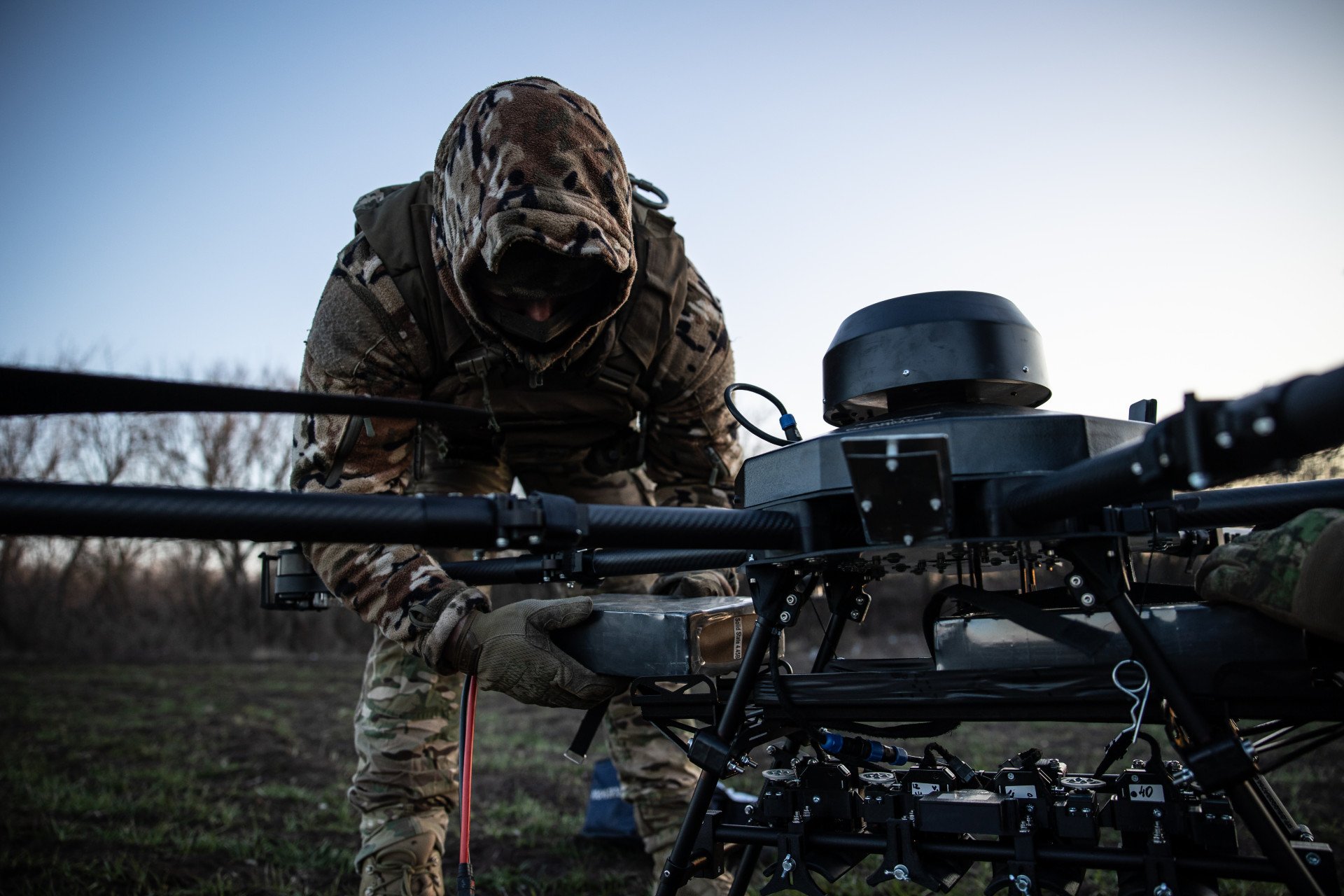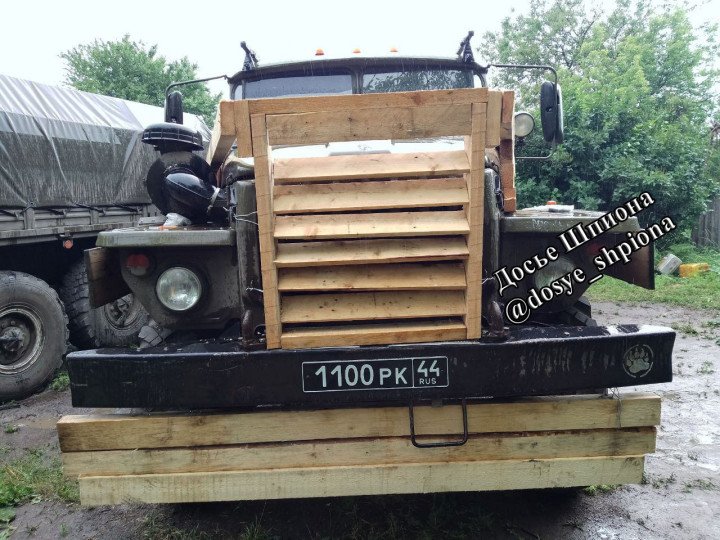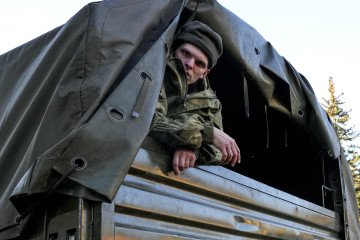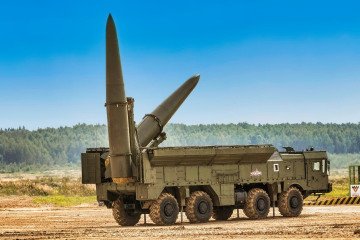- Category
- War in Ukraine
Russia’s Retrograde “Net Tunnels,” the Latest Frontline Tactic Against Ukrainian Drones

Russia’s war against Ukraine has fueled an unprecedented arms race in battlefield technology. Yet, Russian forces are now resorting to retrograde tactics—like net tunnels—to counter Ukrainian drone attacks. How will they fare in modern warfare?
Russian forces have constructed “anti-drone net tunnels” in a bid to prevent Ukrainian attacks along key supply routes. A 2 km drone net tunnel was installed along the Bakhmut–Chasiv Yar “road of life” in an attempt to shield Russian logistics from Ukrainian FPV drone strikes according to a sapper team commander from the Russian 3rd Army Corps.
“We are constantly improving the technology,” the Russian commander said. “The nets are installed on the most open sections of the roads to ensure the safety of our equipment on the move. We are continuously trying to increase the coverage area, improving installation methods to work faster.”
A two-kilometer drone net tunnel was installed along Bakhmut-Chasiv Yar road to shield Russian logistics from Ukrainian FPV drone strikes. pic.twitter.com/sdsNHnBXlp
— Clash Report (@clashreport) February 9, 2025
There is little information about what the drone tunnel is made of to efficiently analyze what could conduct successful attacks against it. However, it’s likely far from completely foolproof.
The netting is a relatively cheap way to protect against various drones such as those armed with grenades and IEDs , as well as fiber-optic cable FPV drones, Defense Express said.
“The net cannot guarantee 100% success in preventing a well-executed strike,” Defense Express reported. “It may prove a good investment in the long run by forcing Ukrainians to expend more ‘kamikaze ’ drones per target”
What drone can destroy Russia’s “drone tunnel”?
Ukraine has several drones in its arsenal, with a wide variety of attack methods. One particularly notable example is the “Dragon” drone, which can drop thermite onto Russian positions—like a dragon spitting fire—making it likely an effective tool for countering Russian net tunnels.
Thermite is not explosive but generates heat at more than 2,200°C (4,000°F). It burns and damages nearly any material—clothing, foliage, military-grade vehicles, and certainly through netting.
Ukrainian forces have begun effectively deploying the so-called 'dragon' drones, with a Russian tank being one of their most recent successful targets. pic.twitter.com/Z87pLu4NRk
— UNITED24 Media (@United24media) October 9, 2024
The “Dragon” drone is self-sustaining and nearly impossible to distinguish. The flames burn through the vegetation providing cover for Russian forces exposing Russian troops and their equipment, and enhancing Ukraine's capabilities for further attacks. Ukraine has already successfully destroyed Russian tanks and underground bunkers.
Using thermite on military targets is not illegal. Ukraine has strictly deployed it against military targets, said Action on Armed Violence (AOAV) the UK-based anti-war advocacy organization. Russia however, has used thermite on civilian targets in March 2023 during the battle of Vuhledar, the AOAV reported.
Russia’s modern war machine with less-than-modern tactics
Drone technology has shaped 21st-century warfare, completely transforming how future wars and conflicts are waged. The Russian 3rd Army Corps commander referred to the tunnel as “technology,” though one could argue that netting is far from being one of the most technological inventions compared to those seen on today’s battlefield. Russia has recently resorted to other less technological tactics on the frontlines.

Russian Ural trucks have been seen “armored” with wood.
A standard AK-74 rifle, which the Ukrainian soldiers have an abundance of, can easily pierce through 20 cm of wood at any effective combat distance. Defense Express reported the findings and said that the wood is likely in a bid to protect the wiring inside the door. However, Russian forces have left the door handle uncovered, which is also attached to the wire they seem to be trying to protect.
Last week it was reported that Russian forces are using donkeys as transport due to significant losses of military equipment.
“Just accept it as a fact,” a Russian soldier said. “Don’t ask where, why, or how. I don’t know. But the fact is, they issued us a donkey. It is stationed with the support unit. We have issues with transport, our trucks are being destroyed. So now we have a donkey to carry ammunition. A real, living donkey. Not humanitarian aid—our logistics truck went to pick up supplies and came back with a donkey.”

"There are currently great difficulties in providing units and divisions — including assault detachments and groups, etc. — with ammunition, military supplies, and food, too,” Viktor Sobolev, Russia’s retired lieutenant general and commander of the 58th Combined Arms Army in the 2000s said. “If some methods are used, like donkeys, horses, and so on, to deliver ammunition and other property to the front line, that is normal.”
The above statement highlights that the so-called “world’s strongest army” is facing issues, a statement which in itself is unusual and not in line with Russia’s usual propaganda that “all is going according to plan”. It’s expected that netting may be used elsewhere along the frontline, and perhaps Russian forces will continue to reveal more retrograde tactics on the battlefield.
-46f6afa2f66d31ff3df8ea1a8f5524ec.jpg)
-6359eca46c72bde40a90abaaadd6eaa8.png)
-29a1a43aba23f9bb779a1ac8b98d2121.jpeg)


-206008aed5f329e86c52788e3e423f23.jpg)
